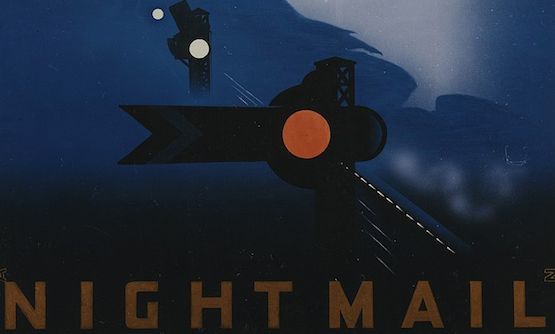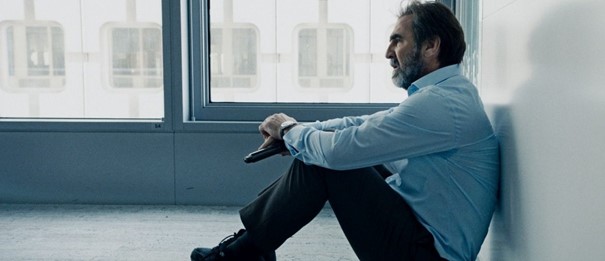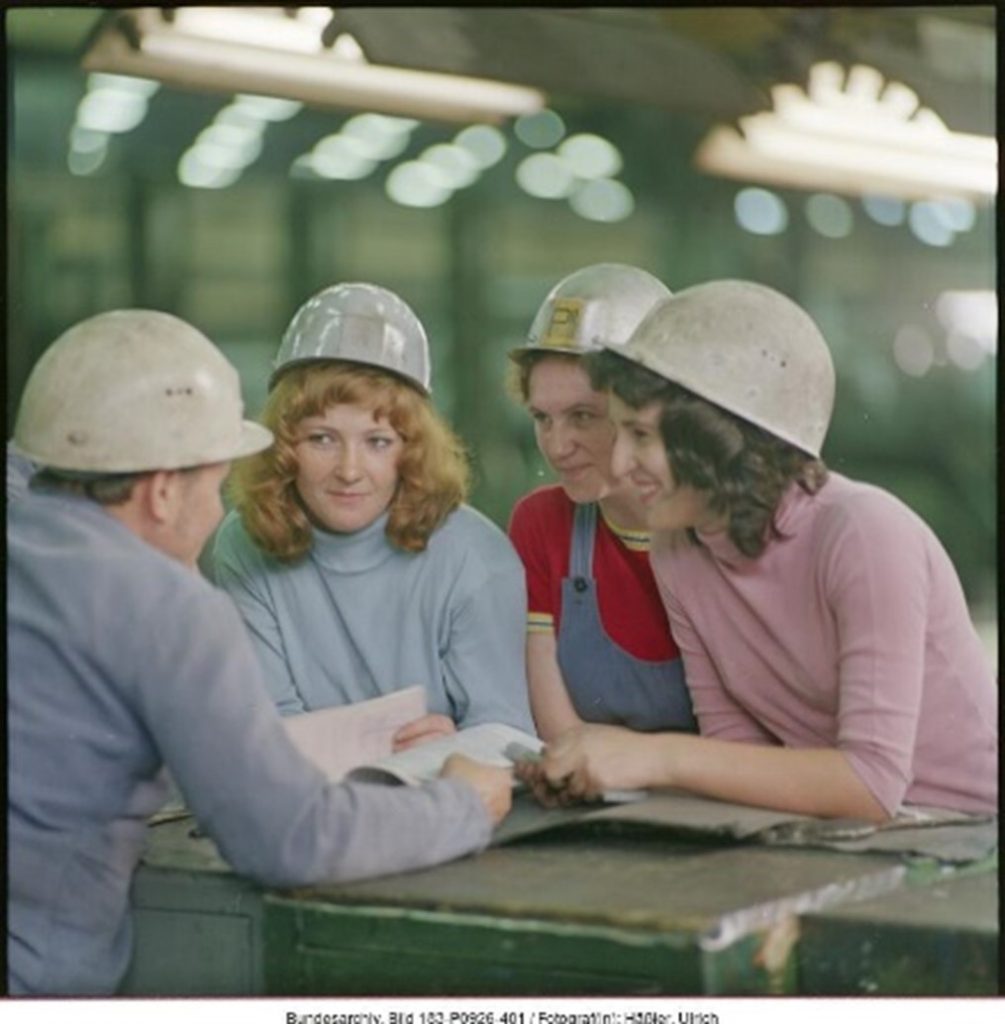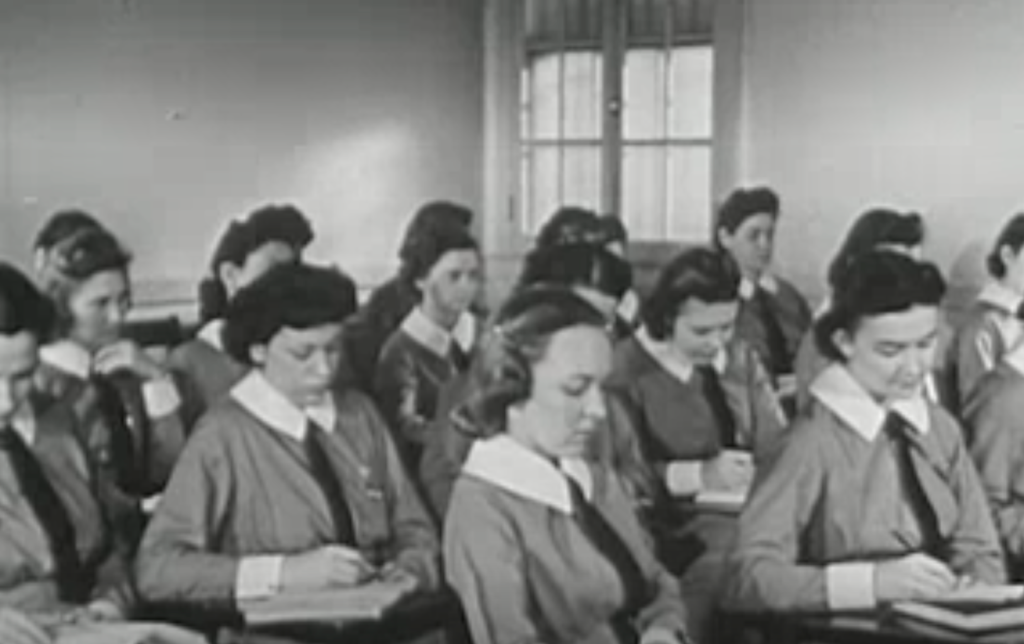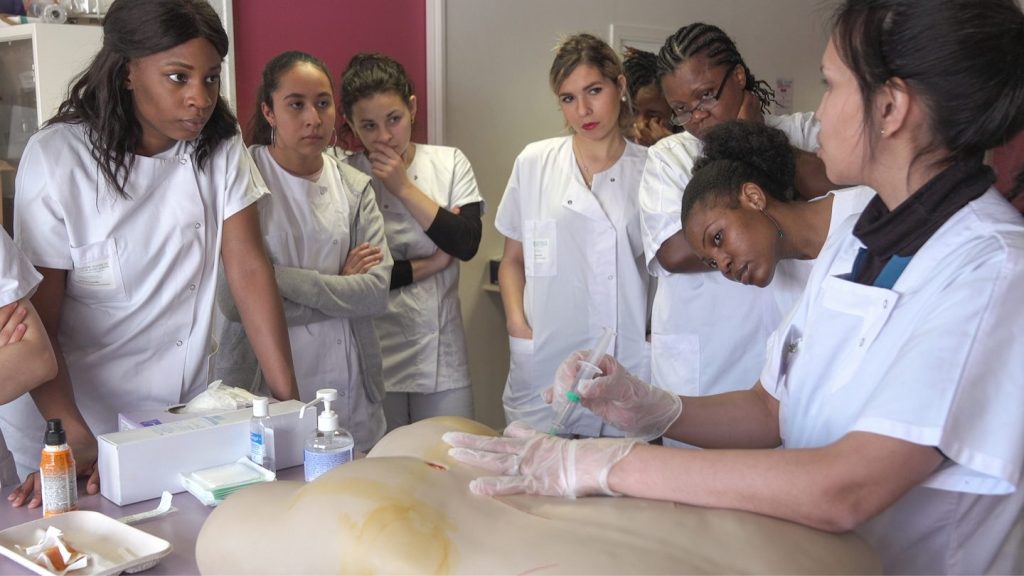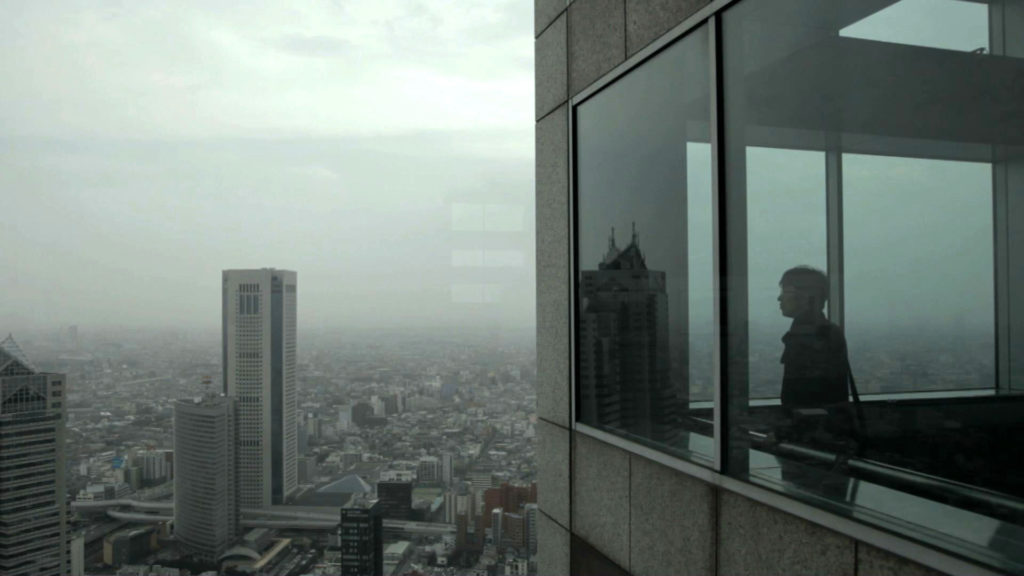Night Mail — The focus on work
The Postal Special used to run daily from London to Aberdeen via Glasgow and Edinburgh. Half a million letters were sorted and distributed by 40 postal workers on board during the nightly journey. Using the example of one journey of this rolling post office, directors Watt and Wright documented the organisational and technical sophistication, as well as the performance of the postal and railway workers. “Night Mail” was intended to impress the public and thus repair the damaged reputation of the Royal Mail.
Traffic controllers, signal box operators, track workers, loading of mail bags, coupling of wagons, shot-by-shot, the directors build the picture of complex logistics that run like proverbial clockwork. Speed, timing, the interaction of technology and people are the supporting elements of this choreography of efficiency. The most modern technology of the time was also used for the filming, as in the impressive flight shots, one of which with the shadow of the plane in the picture. By locating the train in the landscape and involving the people along the track the film avoids portraying the Postal Special as a self-sufficient machine. As Auden’s poem in the final section of “Night Train” makes it clear, this train transports letters for all, in all circumstances.
Finally, it seems it was important to the filmmakers to show the workers not only as staff members, but also in their interpersonal relationships with each other as colleagues, killing time joking with the waitresses in the station café, or when they bicker and banter. It is precisely these dialogues that make “Night Train” so lively and give the documentary feature-film qualities.
As significant as the show-value of the railway technology is, “Night Mail” shows us that only the skills and knowledge of an experienced and well-rehearsed team make the “Travelling Post Office” functional. This can be seen through the precise sorting of letters without postcodes, and in the handing over of mailbags “on the fly”, a method of “loading and unloading” the mail at breakneck speed.
Through the artifice of training a new employee, the viewer learns how mail pouches are loaded and unloaded at full speed. By means of a device on the railway track with a transfer rack and a catch net and a corresponding device on the wagon, the speeding train throws off the pouch of outbound mail to be delivered and the pouch of inbound mail to be sorted slams into the wagon with great force. Until 1971, this “non-stop exchange” was practised in Great Britain and was also common in other countries, such as the USA. Experience and full attention were literally essential for survival in this job, because injuries, even fatal ones, were a constant danger.
Charles Hutchcraft from Illinois describes his experience on a US mail train: (Source: Oral Histories The Railway Mail System, National Postal Museum Smithsonian)
“On the train, the RPO, why, they call what they, they call a catch and throw, you call that, you catch a pouch of mail on the fly when you’re 80 miles an hour, you know, and then you put your hook out the window. Now that was something that was always exciting to me, I’ll never forget the first one, because that’s when we couldn’t even get insurance. If they knew you had a job like that nobody would insure you so you could get hurt awfully easy, so we’d start our own insurance, it still stands to this day.”
As dangerous and exhausting as work in the postal service could be, in 1936, when Night Mail was filmed, workers were still at the centre of the production process. As automation increased, workers became more and more inept, replaced by technical solutions and sometimes downright degraded to superfluous — “deplorables” (1) in Hillary Clinton’s diction.
There is a separate article on the poetic final part of the film, for which W.H. Auden and Benjamin Britten are responsible. Night Mail — The Poetic Gaze
1) Hillary Clinton refers to a portion of Donald Trump’s supporters as a “basket of deplorables” in a speech during a fund-raising event in New York on 9 September 2016.
Night Mail (1936) : GPO Film Unit / Crown Film Unit : Free Download, Borrow, and Streaming : Internet Archive
https://youtu.be/stIh4RweYns
Travelling Post Office Drop-Off Demonstration
Library of Congress collection: 1903 demonstration of catching a mail bag "on the fly"
Night Mail — The focus on work
The Postal Special used to run daily from London to Aberdeen via Glasgow and Edinburgh. Half a million letters were sorted and distributed by 40 postal workers on board during the nightly journey. Using the example of one journey of this rolling post office, directors Watt and Wright documented the organisational and technical sophistication, as well as the performance of the postal and railway workers. “Night Mail” was intended to impress the public and thus repair the damaged reputation of the Royal Mail.
Traffic controllers, signal box operators, track workers, loading of mail bags, coupling of wagons, shot-by-shot, the directors build the picture of complex logistics that run like proverbial clockwork. Speed, timing, the interaction of technology and people are the supporting elements of this choreography of efficiency. The most modern technology of the time was also used for the filming, as in the impressive flight shots, one of which with the shadow of the plane in the picture. By locating the train in the landscape and involving the people along the track the film avoids portraying the Postal Special as a self-sufficient machine. As Auden’s poem in the final section of “Night Train” makes it clear, this train transports letters for all, in all circumstances.
Finally, it seems it was important to the filmmakers to show the workers not only as staff members, but also in their interpersonal relationships with each other as colleagues, killing time joking with the waitresses in the station café, or when they bicker and banter. It is precisely these dialogues that make “Night Train” so lively and give the documentary feature-film qualities.
As significant as the show-value of the railway technology is, “Night Mail” shows us that only the skills and knowledge of an experienced and well-rehearsed team make the “Travelling Post Office” functional. This can be seen through the precise sorting of letters without postcodes, and in the handing over of mailbags “on the fly”, a method of “loading and unloading” the mail at breakneck speed.
Through the artifice of training a new employee, the viewer learns how mail pouches are loaded and unloaded at full speed. By means of a device on the railway track with a transfer rack and a catch net and a corresponding device on the wagon, the speeding train throws off the pouch of outbound mail to be delivered and the pouch of inbound mail to be sorted slams into the wagon with great force. Until 1971, this “non-stop exchange” was practised in Great Britain and was also common in other countries, such as the USA. Experience and full attention were literally essential for survival in this job, because injuries, even fatal ones, were a constant danger.
Charles Hutchcraft from Illinois describes his experience on a US mail train: (Source: Oral Histories The Railway Mail System, National Postal Museum Smithsonian)
“On the train, the RPO, why, they call what they, they call a catch and throw, you call that, you catch a pouch of mail on the fly when you’re 80 miles an hour, you know, and then you put your hook out the window. Now that was something that was always exciting to me, I’ll never forget the first one, because that’s when we couldn’t even get insurance. If they knew you had a job like that nobody would insure you so you could get hurt awfully easy, so we’d start our own insurance, it still stands to this day.”
As dangerous and exhausting as work in the postal service could be, in 1936, when Night Mail was filmed, workers were still at the centre of the production process. As automation increased, workers became more and more inept, replaced by technical solutions and sometimes downright degraded to superfluous — “deplorables” (1) in Hillary Clinton’s diction.
There is a separate article on the poetic final part of the film, for which W.H. Auden and Benjamin Britten are responsible. Night Mail — The Poetic Gaze
1) Hillary Clinton refers to a portion of Donald Trump’s supporters as a “basket of deplorables” in a speech during a fund-raising event in New York on 9 September 2016.
Night Mail (1936) : GPO Film Unit / Crown Film Unit : Free Download, Borrow, and Streaming : Internet Archive
https://youtu.be/stIh4RweYns
Travelling Post Office Drop-Off Demonstration
Library of Congress collection: 1903 demonstration of catching a mail bag "on the fly"

Night Mail — The Poetic Gaze
When the eminent film scholar Amos Vogel was forced to flee Vienna to the United States in 1938, the 17-year-old had already made the decision to devote his life to film. One experience that would define his future was a screening of "Night Mail" (1936) and this film still doesn’t fail to impress today.
Bossnapping à la Cantona
In the last two decades in particular, disputes between management and workers in France have become increasingly intense. The so-called "bossnapping", the hostage taking of management, masterfully staged by Éric Cantona in the Netflix series ‘Inhuman Resources’ (2020), provides a telling example.
Eastern German Women. Self-realisation through employment
As a woman you always have to be better than the best man in the team. That's the minimum for a successful woman, where patriarchy works." This is how Maria Gross, a cook and restaurateur from Thuringia, sums up the situation of East German Women (2019) in a MDR-documentary by Lutz Pehnert.
Between enlightenment and ‘plugging’. A history of vocational guidance films on nursing
Combating nursing shortages through film has a history. A W-o-W film evening explored the changing nature of the nursing profession through vocational guidance films over the last 80 years.
Capturing ‘Each and Every Moment” of nurses in training
A W-o-W film evening contrasted vocational guidance films with "Each and Every Moment", a heartfelt documentary by Nicolas Philibert on training of nurses at the La Croix Saint-Simon hospital in the suburbs of Paris.
Hikikomori — depression as rebellion?
What can Europe learn from Japan's experience dealing with NEET youth, those who are neither in employment nor training?

About this blog
By selecting a film or an image, this blog literally illustrates the vast sphere of work, employment & education in an open collection of academic, artistic and also anecdotal findings.
About us
Konrad Wakolbinger makes documentary films about work and life. Jörg Markowitsch does research on education and work. They are both based in Vienna. Information on guest authors can be found in their corresponding articles.
More about
Interested in more? Find recommendations on relevant festivals, film collections and literature here.
About this blog
With picking a film or an image, this blog literally illustrates the vast sphere of work, employment & education in an open collection of academic, artistic and also anecdotal findings.
About us
Konrad Wakolbinger makes documentary films about work and life. Jörg Markowitsch does research on education and work. We both work in Vienna. Information on guest authors can be found in their respective articles.
More about
Interested in more? Find recommendations on relevant festivals, film collections and literature here.


